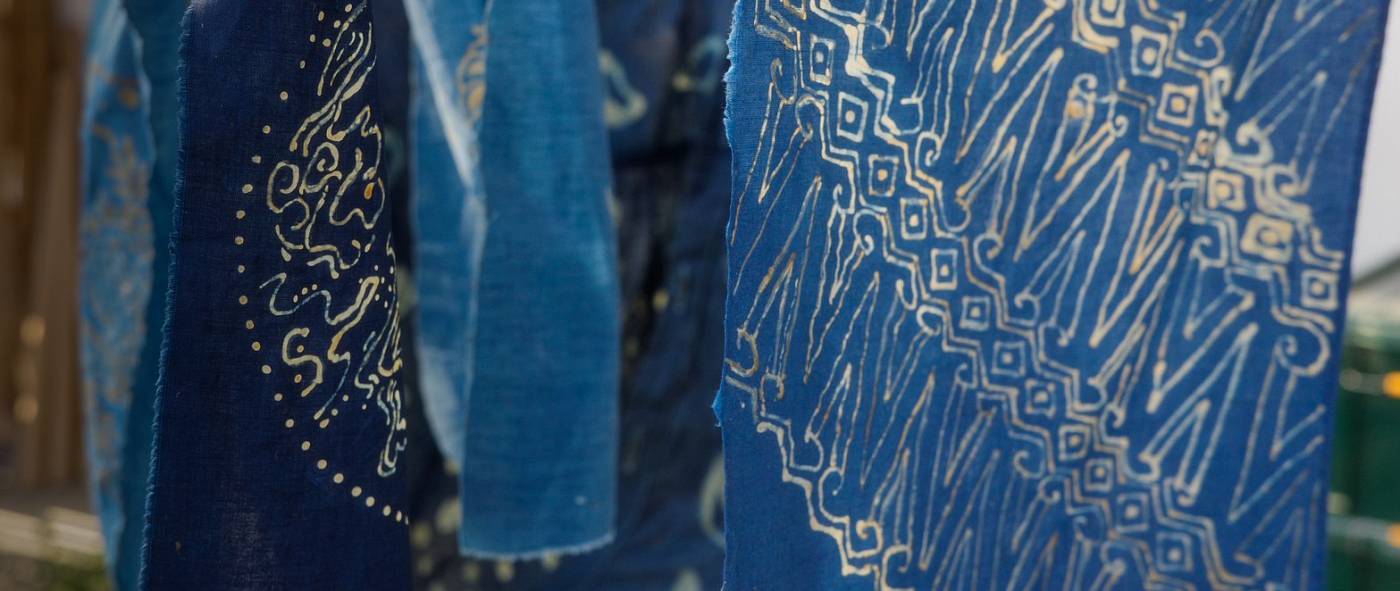
Meet Jake Fee

Meet Jake Fee, one of our new artisans in the Artisan Development Program! In his first post, Jake introduces himself in the form of a diagram, writing about his guiding lights of Craft, Play, Land, and more.
My name is Jake Fee, I am one of the four Artisans in Development at North House Folk School this year, and I would like to introduce myself in the form of a diagram.
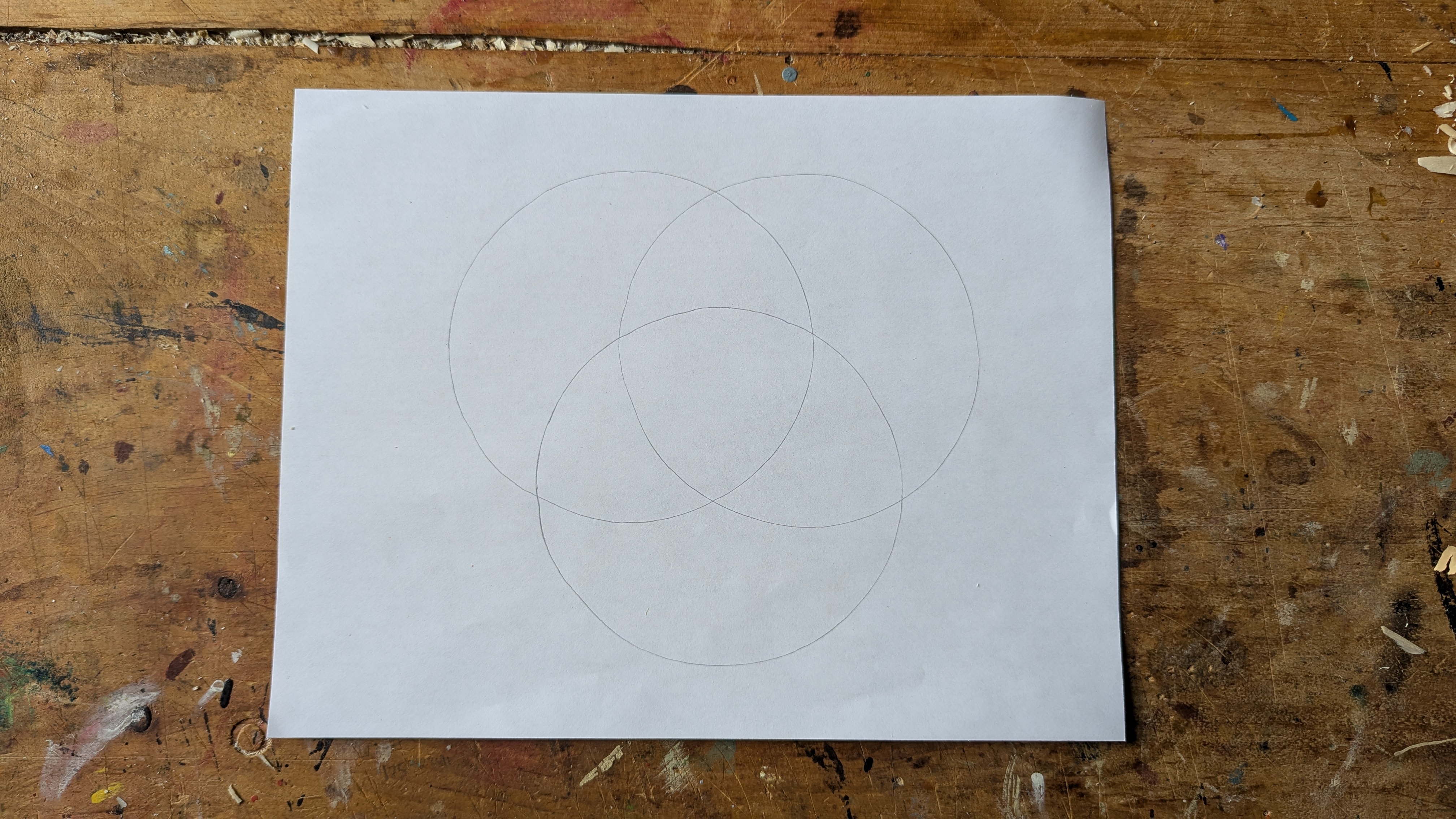 fig. 1
fig. 1
The three cardinal directions of purpose for me this year are Craft, Play, and Land. These three concepts, and the intersections between them, are central to my work as a craft educator.
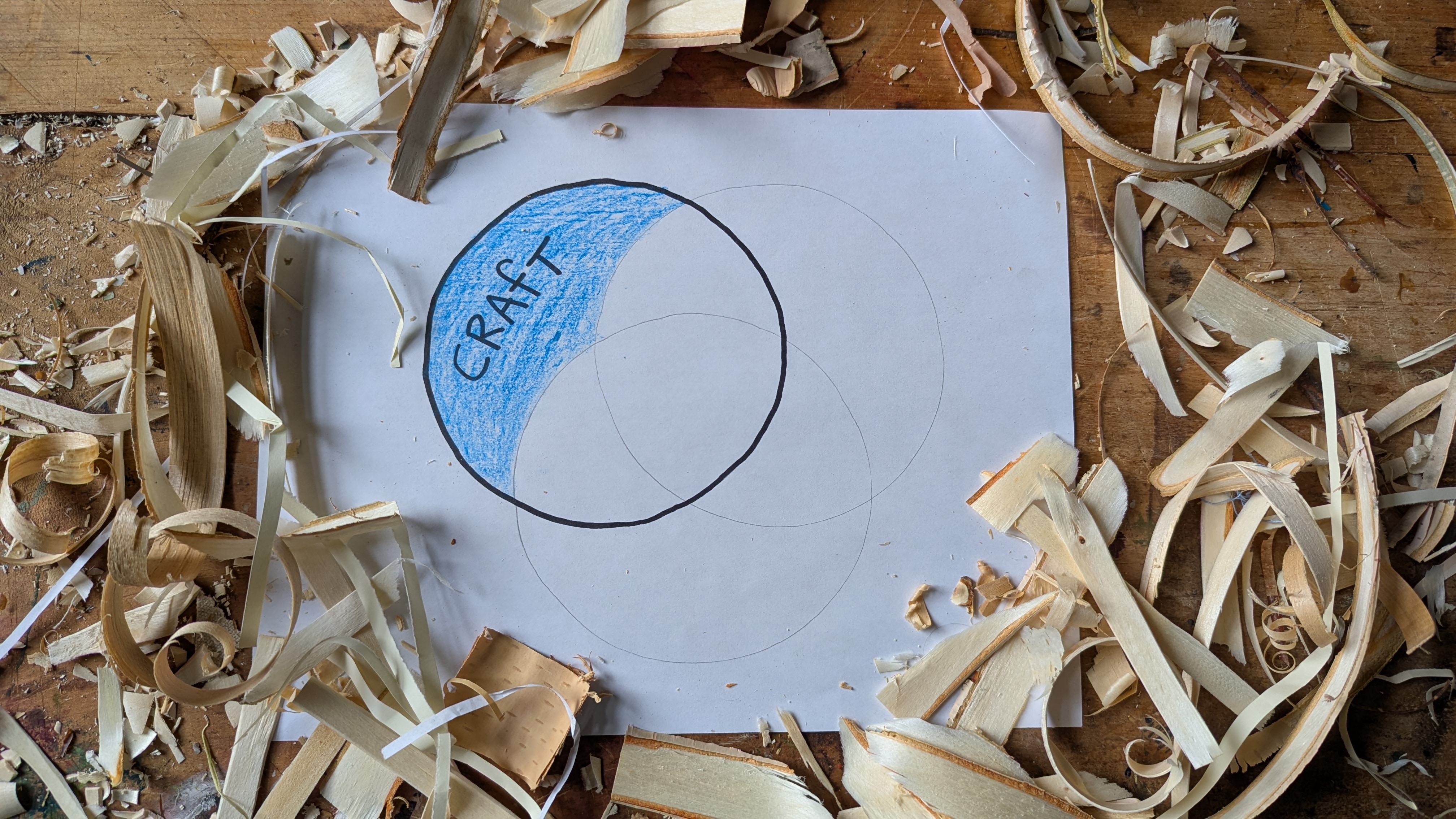 fig. 2
fig. 2
Craft! I was only tangentially aware of the traditional craft universe before I became a North House Craft Education Intern in 2020. During that year, I was introduced to blacksmithing, spinning, crocheting, bread baking, spooncarving, rosemaling, kolrosing, boatbuilding, timber framing, axework, embroidery, sprang, felting, dyeing, basket weaving, and the rest of the overflowing abundance of craft knowledge here on campus. Since then, I've taught basketry classes, woodcarving classes, nålbinding and spinning and sewing classes, workshops on making automata, and I've even given a lecture on the wonders of willow. Craft inspires me in the morning and keeps me up late at night.
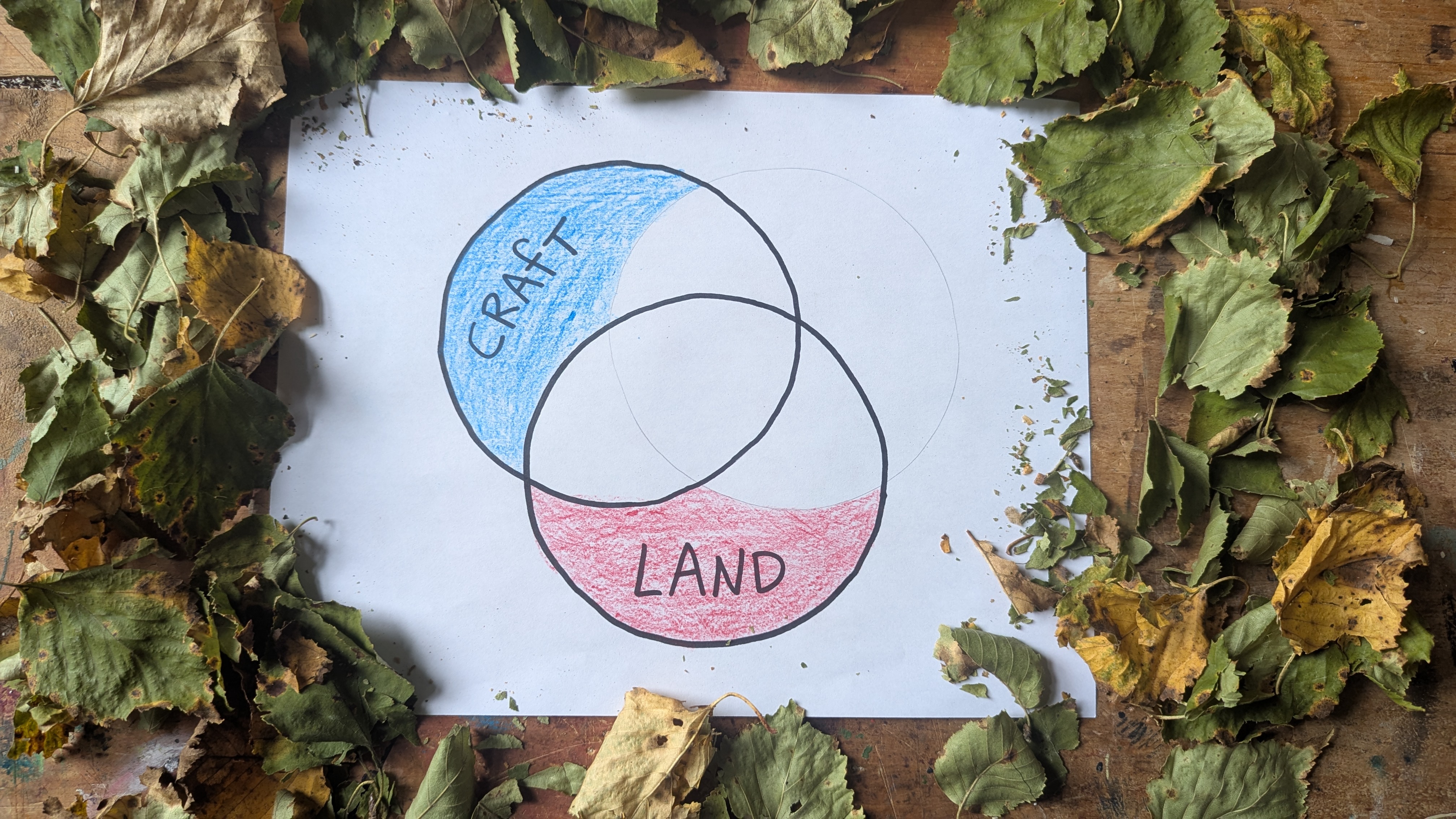 fig. 3
fig. 3
Everything comes from the Land. I grew up in southern Minnesota, near the convergence of the Blue Earth and Minnesota rivers. Our waterways are polluted and sticky, and they are also beautiful, and rich, and when the sun rises over the misty water I am proud of my home. I have been inspired by Ruth Goodman, Robert MacFarlane, Robin Wall Kimmerer, William Bryant Logan, Alexander Langlands, and others who write and think about the entangled relations between the human species and the terrestrial landscape. If I may tip into the genre of manifesto for a moment: it seems clear to me that the earth is crying out for us to return to our role as stewards. The pastoral myth of "leave no trace" and the post-industrial desire for "untouched wilderness" has done us and our non-human relations great harm. It is imperative that we get back in the woods. It is imperative that we learn to make things out of our local natural resources. It is imperative that we learn the names of the plants and animals again. To me, the land is the source of all goodness, all prosperity, all joy. To be in service to the land is the highest calling.
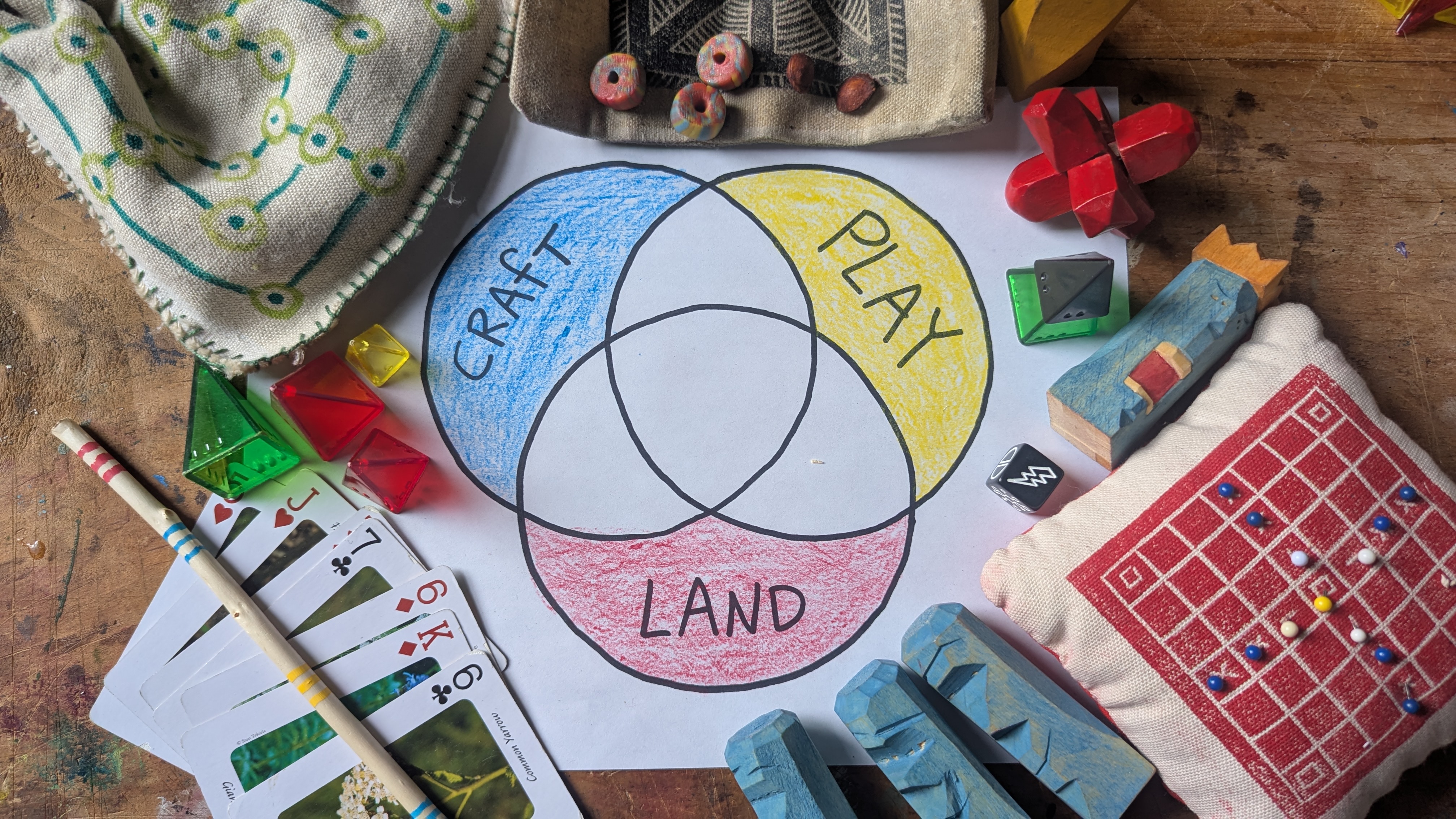 fig. 4
fig. 4
Play is the best way to learn! I don't think it's an exaggeration to say that games teach us the ways we can exist in the world. I've always had a fascination with games of all kinds—card games, P.E. games, video games, board games, kid's games, drinking games, camp games, party games, solstice games, surrealist games, role-playing games, and most recently, handmade games. When I was a kid, I would invent elaborate board games, and as I was (and remain) an only child, my dear patient parents would have to play them with me. I thank them for their service. Part of my work this year is to develop several toys and games made of all-natural craft materials. I agree with Johan Huizinga: "Play cannot be denied. You can deny, if you like, nearly all abstractions: justice, beauty, truth, goodness, mind, God. You can deny seriousness, but not play."
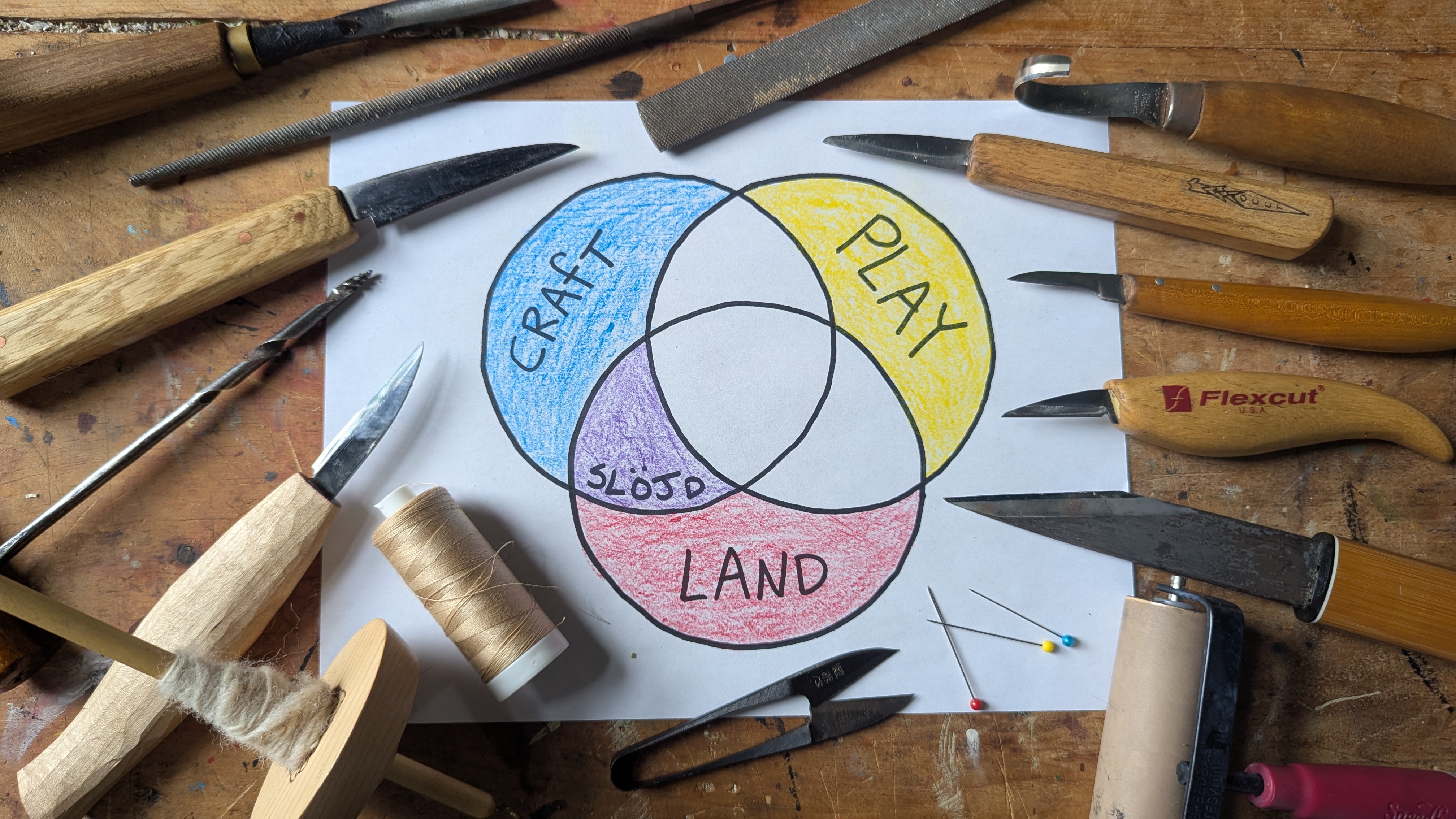 fig. 5
fig. 5
At the intersection of Craft and Land is where we find that most North-Housian word: Slöjd. I have done my best to define my understanding of slöjd elsewhere, but for the purposes of introducing myself today, I will summarize: slöjd, to me, is craft that is directly sourced from the local landscape. When I bring students out to the riverbank to cut willow for baskets, that is slöjd. When I chop down a birch sapling to make into coat hooks for my room, that is slöjd. When my friend gives me wool from her sheep who eat the local grass, that's slöjd. When you take your friends out to the woods to whittle trees into chair parts, that's slöjd. When my friends trim their apple trees and give me the twigs so I can carve weird little faces, that's definitely slöjd. Through craft we find an intimacy with the land that is not achievable through other means. Slöjd, to me, is an active dependence on the land for materials. I wasn't any good at identifying trees until I started carving wood. I didn't know a dandelion from poison ivy until I learned to forage snacks from the prairie. Slöjd, for me, is that bridge from land-ignorance to land-belonging.
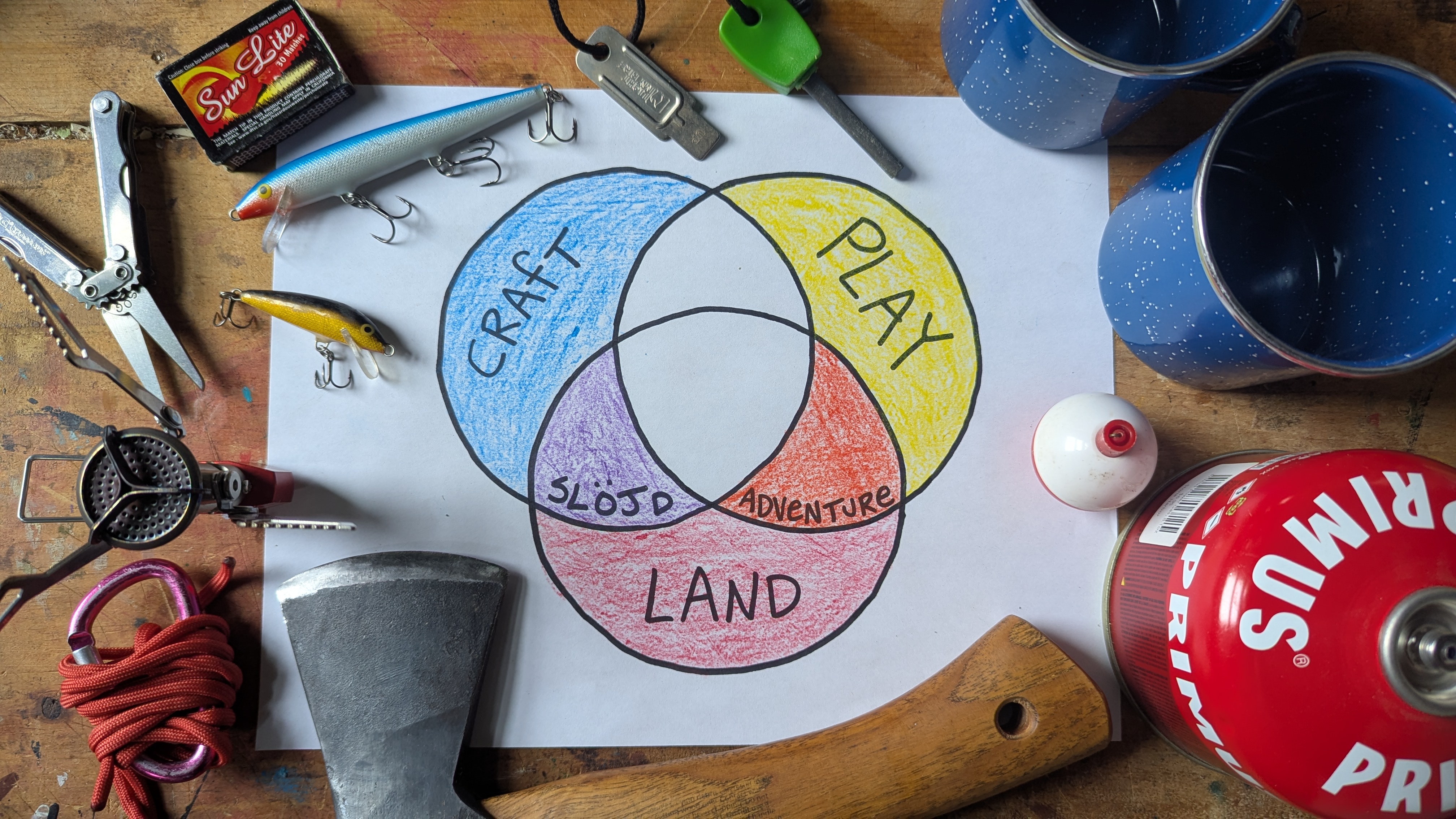 fig. 6
fig. 6
When Land meets Play, there is Adventure. I've been a camp kid since I was old enough to hold a paddle, and it has brought me great spiritual nutrition throughout my life. I've been a camper at YMCA Camp Patterson, YMCA Camp Ihduhapi, and YMCA Camp Menogyn, a camp counselor, a river guide, a certified Wilderness First Responder, and a very dedicated backyard wanderer. I love to be out in the green, and I love to bring friends and students with me.
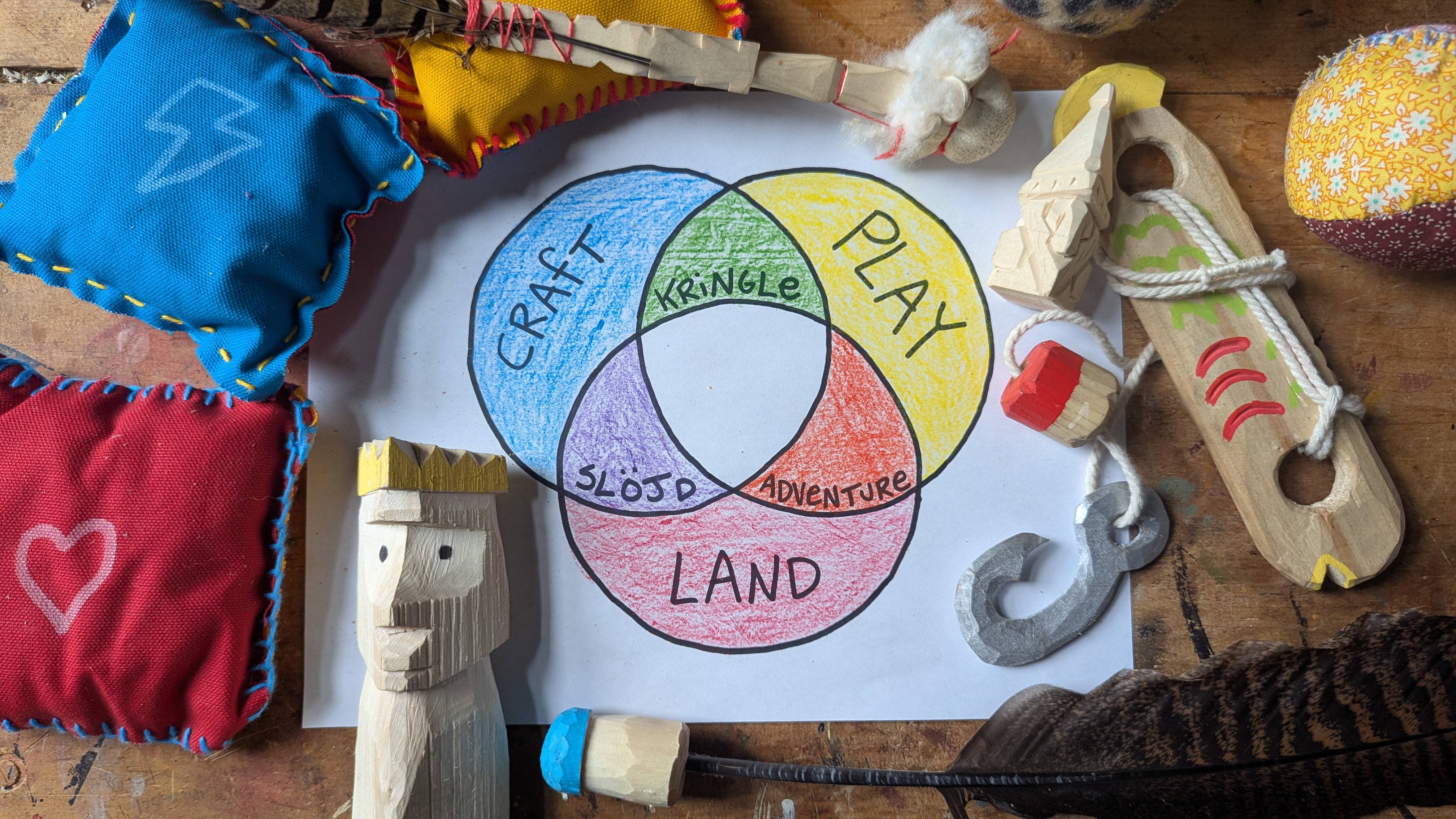 fig. 7
fig. 7
Craft and Play come together quite easily. This is the work and the power of the Kringle, which every day I seek to fulfill. Kris Kringle, also known as Santa Claus, also known as Saint Nick, is my guiding light in this realm. He is famous, of course, for making handmade games, toys, and other diversions out of natural materials. All over the world, there are such wonderful traditions of handmade toys and games, from African mancala boards to Mayan corn-husk dolls to Lakota plum-pit games to Viking-Age chess. These days, you'd be lucky to find a toy that is both biodegradable and durable. Kids grow out of toys (and clothes!) way too fast to justify making toys or games out of something so eternally-undecomposable as plastic. It is also empowering for young people to learn to make their own fun! I loved teaching the Handmade Games Camp at North House this summer. Kids walked away with jump ropes, wrestling sticks, juggling balls, board games, throwing darts, and more, all made by their own two hands out of locally-harvested materials and ready to throw in the compost bin whenever the fun fades out.
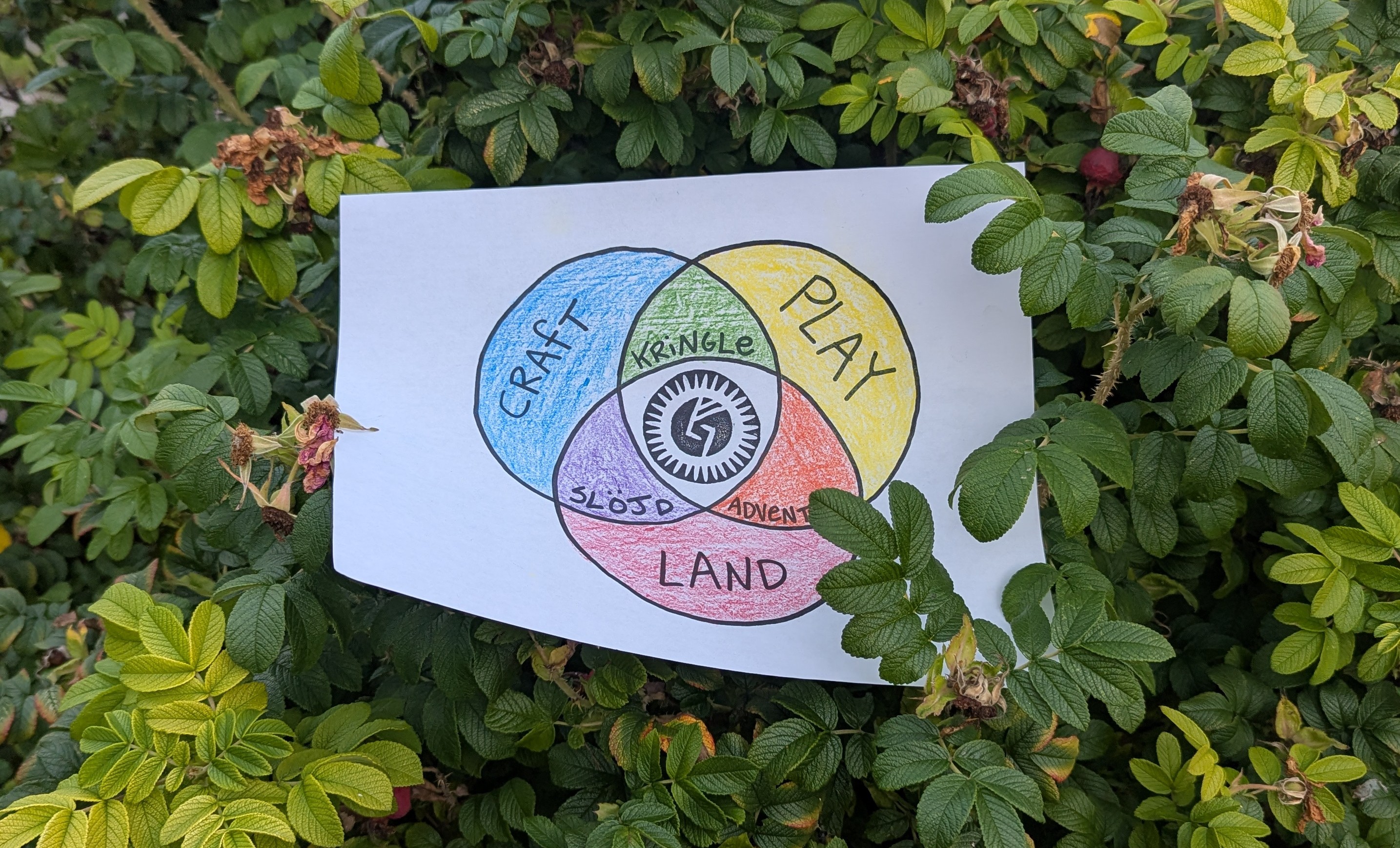 fig. 8
fig. 8
Craft, Land, Play, Slöjd, Adventure, and the Kringle. This is the constellation of stars I will be following this year. That's my work.
You can find more of Jake Fee on his website, on Instagram, and on Bluesky.